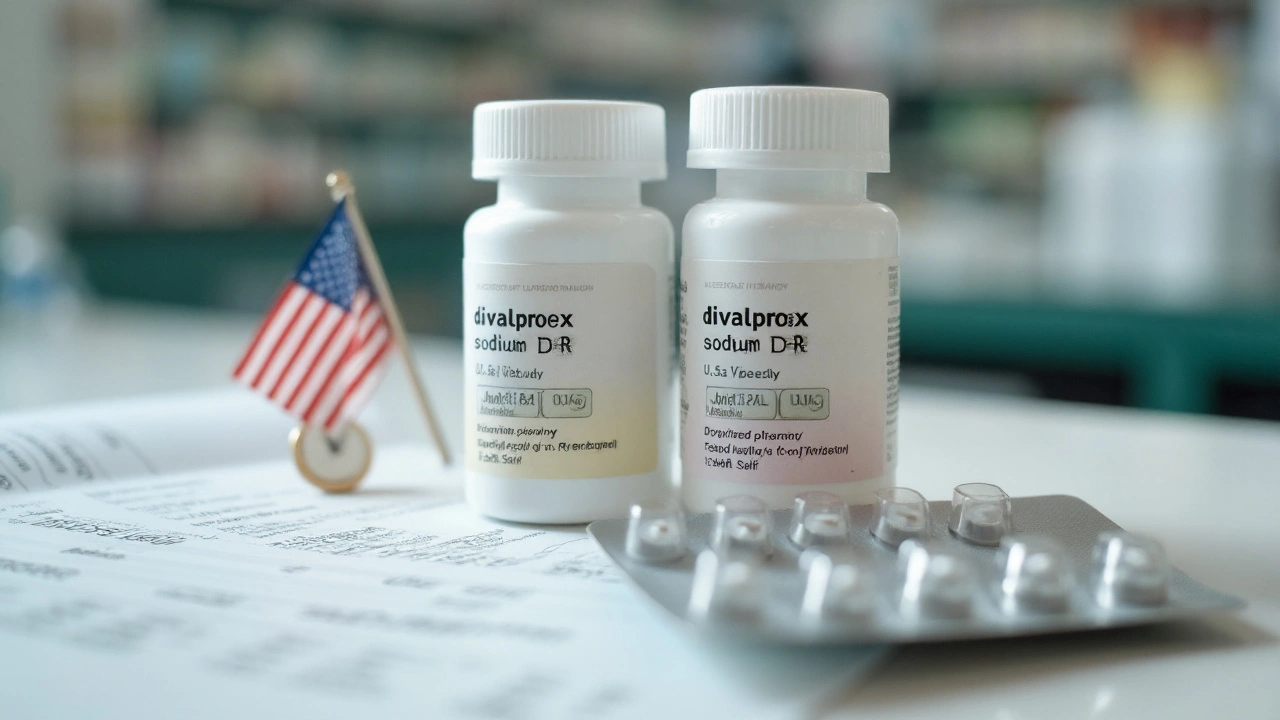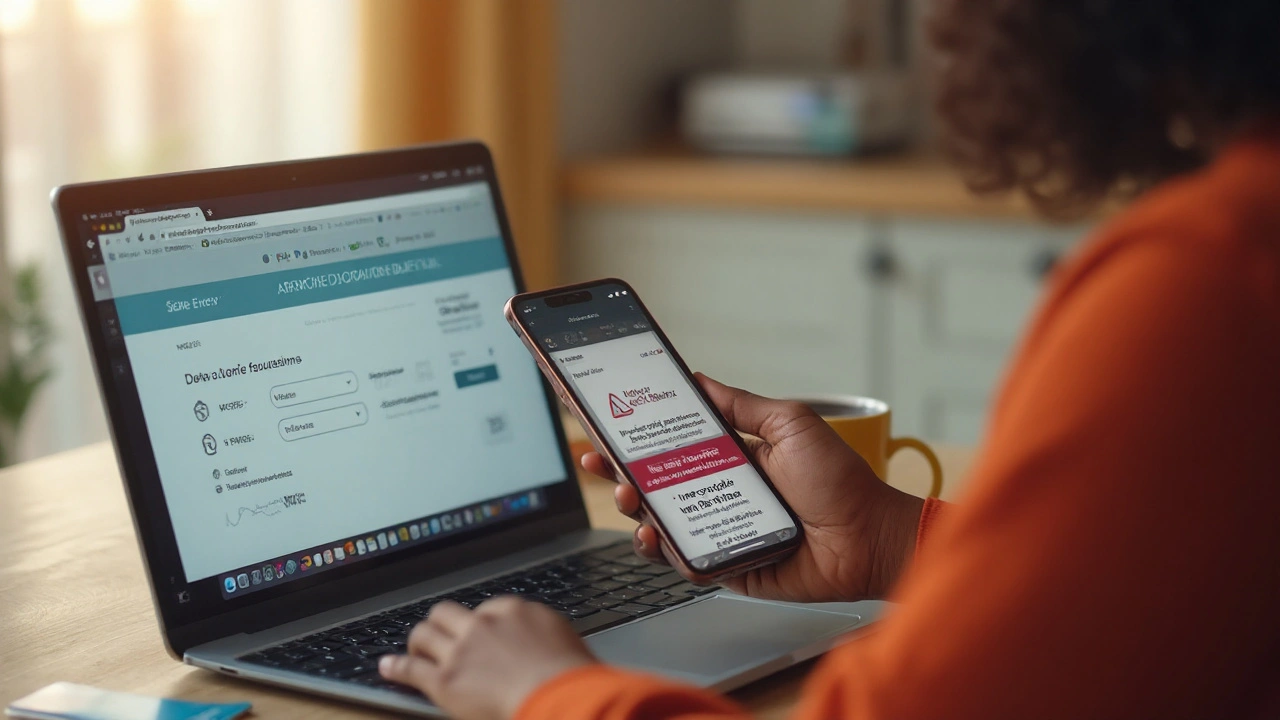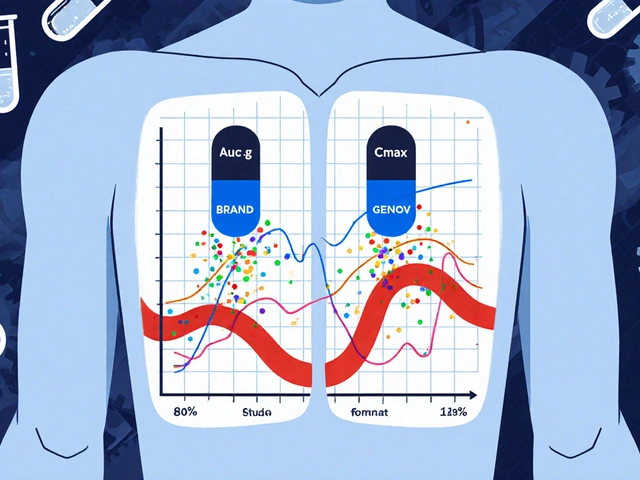Sticker shock is real: brand-name Depakote can run hundreds per month in the U.S., while generic divalproex often costs a fraction of that. The goal here is simple-pay less without risking your health or your shipment. I live in Seattle and buy most prescriptions through licensed mail-order pharmacies, and the same playbook works for Depakote. If you’re trying to buy generic depakote online safely and cheap, I’ll show you the exact steps, prices to expect, and the red flags that actually matter.
What to know before you buy generic Depakote online
Depakote is the brand name for divalproex sodium. It’s used for seizure disorders, acute mania in bipolar disorder, and migraine prevention. In the U.S., it’s prescription-only. No legitimate pharmacy will ship it without a valid prescription from a licensed clinician.
You’ll see these common forms in the U.S. (names vary by manufacturer):
- Delayed-Release (DR) tablets: 125 mg, 250 mg, 500 mg (enteric-coated to be gentler on the stomach).
- Extended-Release (ER) tablets: 250 mg, 500 mg (once-daily in many cases).
- Sprinkle capsules: 125 mg (can be opened and sprinkled on soft food-don’t chew granules).
- Valproic acid oral solution: 250 mg/5 mL (not the same release profile as ER).
Different forms are not automatically interchangeable. ER isn’t the same as DR, and switching can change blood levels. Always confirm with your prescriber before changing form, strength, or manufacturer.
Serious safety warnings you should actually care about:
- Liver risk: Valproate can cause liver failure, especially early in treatment. People with liver disease or certain metabolic disorders should not take it.
- Pancreatitis: Rare but dangerous; sudden severe abdominal pain-get urgent care.
- Pregnancy: Strongly discouraged unless other treatments fail; high risk of birth defects and developmental problems.
- Mental health: Like other antiepileptics, there’s a small increased risk of suicidal thoughts-report mood changes.
FDA safety labeling notes that valproate “can cause major congenital malformations, particularly neural tube defects,” and should be avoided in pregnancy unless no alternative works and the benefits clearly outweigh the risks.
Common, less serious side effects include nausea, tremor, sleepiness, hair loss, and weight gain. These can still be a big deal day-to-day, so keep your prescriber in the loop if they affect function.
Monitoring matters. Your clinician may check liver enzymes, blood counts (platelets), and sometimes ammonia-especially if you feel confused, abnormally tired, or develop vomiting. For many people, dose adjustments are guided by blood levels (a typical therapeutic range is often cited around 50-100 mcg/mL for seizures, up to about 125 mcg/mL in acute mania), but your target is individualized.
Drug interactions that move the needle:
- Lamotrigine: Valproate raises lamotrigine levels-rash risk goes up.
- Carbapenem antibiotics (like meropenem): Can drop valproate levels-seizure risk.
- Topiramate: Can raise ammonia-watch for confusion or lethargy.
- Warfarin: Bleeding risk can shift-monitor INR.
- Enzyme inducers (e.g., carbamazepine, phenytoin): Can push levels around-close monitoring helps.
Bottom line: yes, you can save a lot online, but only if you keep safety guardrails in place-right form, steady manufacturer when possible, and clear communication with your prescriber.

How to get it safely and cheaply online (U.S., 2025)
Here’s the simple, no-drama process I use and recommend to friends and family.
Step-by-step to a safe, low price:
- Confirm your prescription is current and clear on form (ER vs DR), strength, dose, and quantity. If your clinician is flexible, ask which form is okay to switch to if one is cheaper (e.g., DR vs ER).
- Pick only licensed U.S. pharmacies. Look for .pharmacy domains or check state board licensure and NABP accreditation. If a site offers “no prescription needed,” close the tab.
- Compare cash prices and insurance copays. Run both. Cash with a legitimate coupon often beats insurance for generics.
- Try a 90-day supply. Mail-order pharmacies often price 90 days 10-30% cheaper per tablet and reduce refill hassles.
- Ask for manufacturer consistency. If you’re stable, note the manufacturer name or NDC on your bottle and ask the pharmacy to keep it the same when possible.
- Use auto-refill reminders and set a level check reminder on your calendar if your clinician monitors levels.
- No prescriber? Book a legitimate telehealth visit in your state. Valproate is not a controlled substance, but you still need a real evaluation and follow-up.
What will you pay? It depends on form, strength, and quantity. DR tablets are often the cheapest, ER is pricier, and brand-name Depakote is far more expensive than any generic. Prices below reflect common U.S. mail-order cash ranges I’ve seen as of mid‑2025; your local numbers may be a bit higher or lower.
| Form & Strength | Typical 30‑day Cash | Typical 90‑day Cash | Notes |
|---|---|---|---|
| DR 250 mg tablets | $8-$20 | $18-$45 | Often the sweet spot for lowest per‑mg price. |
| DR 500 mg tablets | $10-$28 | $24-$60 | Fewer pills; check if per‑mg still better than two 250s. |
| ER 500 mg tablets | $18-$55 | $45-$120 | Convenient once‑daily; pricier than DR. |
| Sprinkle caps 125 mg | $12-$35 | $30-$90 | Useful for swallowing issues; check per‑mg price. |
| Brand Depakote ER 500 mg | $300-$800+ | $850-$2,100+ | Brand usually not cost‑effective unless medically required. |
Shipping and fees vary, but many large U.S. mail-order pharmacies offer free standard shipping or a small fee ($0-$5). Heat exposure during normal summer shipping isn’t usually a problem for tablets; keep bottles at room temp once delivered.
Easy cost wins I keep seeing:
- DR is usually cheaper than ER. If once-daily dosing isn’t critical for you, ask about DR.
- 90 days typically lowers per‑pill cost and reduces refill risk.
- Compare 500 mg vs two 250 mg. Sometimes two 250s are cheaper; sometimes not. Do the quick math.
- Cash with a coupon can beat your insurance copay. Check both before you pay.
- If stock is out, ask for the same form in another strength to make up your dose (only if your prescriber agrees).
Red flags that should stop you cold:
- “No prescription needed” or “worldwide pharmacy” shipping Rx meds to the U.S. without a U.S. prescription.
- Prices that look too good to be true compared to the table above (e.g., ER 500 mg for $2 for 90 days).
- Foreign brand names you don’t recognize (e.g., “Chrono” formulations) shipped to the U.S. without clear equivalence.
- Weird payment methods only (gift cards, crypto) or no U.S. address/licensure.
Credible sources back this up. The FDA’s BeSafeRx program and the National Association of Boards of Pharmacy (NABP) both recommend buying only from licensed U.S. pharmacies and avoiding sites that sidestep prescriptions. The Epilepsy Foundation also emphasizes consistency with manufacturer for antiseizure drugs where possible and close communication when switching.
If you want a tidy checklist you can screen‑cap before you shop, here it is.
- Rx ready: ER vs DR, dose, quantity approved.
- Pharmacy check: U.S.-licensed, NABP-accredited or .pharmacy domain.
- Price check: insurance copay vs cash coupon, 30 vs 90 days.
- Form choice: ask if DR is okay if ER is pricey (only with prescriber okay).
- Manufacturer note: record it if you’re stable on a specific one.
- Refill rhythm: auto-refill on, set calendar alerts.
- Monitor: know what labs or symptoms to watch for.

Compare generics, formats, and alternatives
Let’s unpack the trade‑offs so you can choose what fits your life and your wallet without guessing.
ER vs DR vs sprinkle-how they differ in daily life
- ER (extended-release): Often once daily, flatter blood levels, fewer peaks/troughs. Most convenient. Usually costs more.
- DR (delayed-release): Enteric‑coated to ease stomach upset; often taken 2-3 times daily. Usually the best price.
- Sprinkle capsules: Great if you can’t swallow tablets. You can open and sprinkle on soft food. Cost sits between DR and ER in many markets.
Don’t split or crush ER or DR tablets. If swallowing is a problem, ask about sprinkle capsules.
Brand vs generic-should you care?
For most people, FDA-approved generics are clinically equivalent to brand. With antiseizure meds, some neurologists prefer staying with one manufacturer to avoid small swings that might matter for seizure control. If you’re well-controlled, note the manufacturer; if the pharmacy switches it, ask your prescriber if they want a level check or closer follow-up. If your prescriber marks “dispense as written” for brand only, expect a much higher price unless your insurance has strong brand coverage.
Alternatives and when they fit
Alternatives depend on your condition:
- Seizures: Levetiracetam (often well-tolerated, cheap), lamotrigine (rash risk; slow titration), topiramate (cognitive side effects possible). Each has its own pros/cons.
- Bipolar mania: Lithium (needs blood and kidney monitoring), quetiapine, or other mood stabilizers atypicals. Choice depends on symptoms and history.
- Migraine prevention: Topiramate, propranolol, CGRP inhibitors. Discuss cost, side effects, and your health profile.
If you’re pregnant or trying, valproate is usually off the table for most indications. Many clinicians shift to safer options like lamotrigine for epilepsy, or other choices depending on your case.
Scenarios and trade‑offs
- You want once-daily dosing: ER is easiest but pricier. Ask if ER is clinically preferred for you. If not, DR could save real money.
- You’re ultra price‑sensitive: DR 250 or 500 mg in a 90‑day supply with a coupon usually wins.
- Swallowing issues: Sprinkle caps solve the problem without crushing tablets.
- Stable for years: Ask the pharmacy to maintain the same manufacturer and label the bottle with the maker’s name. Reconfirm during refills.
Mini‑FAQ
Can I buy Depakote online without a prescription?
No. Any site that says you can is not operating legally in the U.S. and may sell counterfeits.
What’s a “cheap” price in 2025?
For common doses, many people see $8-$28 for a 30‑day DR supply and $18-$55 for ER. Ninety‑day fills often cost $18-$120 depending on form and strength.
Is switching from ER to DR okay to save money?
Maybe, but only with your prescriber’s approval. The timing and blood level profile differ.
Can I split ER or DR tablets?
No. Don’t cut, crush, or chew them. If you need flexibility, ask about sprinkle capsules or a different strength.
My pharmacy changed the manufacturer. Should I worry?
Not always. But if you have epilepsy and are sensitive to changes, let your prescriber know. They might suggest a level or closer watch for a bit.
What labs should I expect?
Many clinicians check liver enzymes and CBC, and sometimes ammonia. They may also check a valproate level, especially after dose changes or if symptoms shift.
What about pregnancy?
Avoid valproate if pregnant or trying to conceive unless your specialist says there’s no safer option. Use reliable contraception if you could become pregnant.
Any way to reduce weight gain?
Small, steady habits help-daily step goal, protein with meals, fiber, and watching liquid calories. If weight changes are significant, talk to your clinician about options.
Next steps and troubleshooting
- If the price is still too high: Ask your prescriber about switching ER to DR, changing tablet strength, or a 90‑day supply. Compare two pharmacies-prices vary.
- If the pharmacy is out of stock: Ask for the same form in another strength to reach your dose, or a different manufacturer. Your prescriber can approve a temporary change if needed.
- If side effects hit hard: Don’t stop suddenly. Message your prescriber. Dose timing, formulation changes, or slow adjustments can help.
- If insurance blocks it: Ask the pharmacy to run it as cash with a coupon. Sometimes it’s cheaper. If not, your prescriber can try a prior authorization or a cheaper alternative.
- If you need a prescriber fast: Use a reputable U.S. telehealth service operating in your state for a real visit and ongoing follow‑up. Bring your past med list and labs if you have them.
Credibility check: The safety points here are consistent with the FDA-approved labeling for valproate products (black box warnings on liver toxicity, pancreatitis, and pregnancy risk), and the pharmacy buying tips align with NABP and FDA BeSafeRx guidance. For seizure management and switching concerns, major patient groups like the Epilepsy Foundation encourage consistency and communication when manufacturers change. If you’re unsure, ask your own prescriber-they know your history best.






Manufacturer consistency matters more than chasing the absolute lowest price.
August 22I've seen subtle swaps cause breakthrough symptoms even when the bottle says 'generic'.
If you're stable, record the NDC and ask the pharmacy to keep that maker when refilling.
Coupons and 90-day fills are great for reducing cost, but never skip labs to save a few bucks.
Also, avoid any site that claims to ship without a U.S. prescription; that's a real gamble with health consequences.
Sharon Cohen